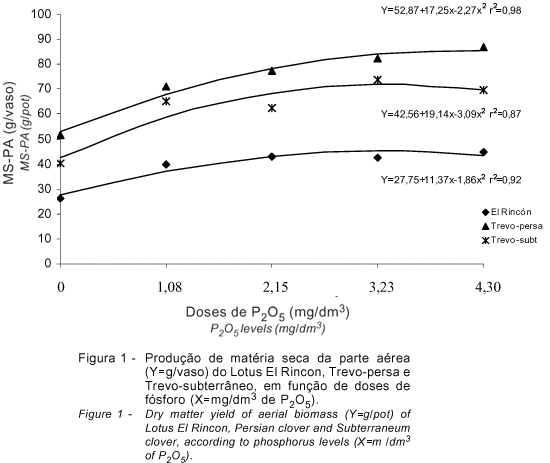This experiment was established in greenhouse at Embrapa Clima Temperado, Pelotas, RS, with the objective to evaluate the effects of different doses of phosphorus and potassium on dry matter production of aerial biomass and roots, length of above ground parts and roots and efficiency and score of nodulation of three cool season annual forage legumes. The treatments were five doses of P (0,0; 1,08; 2,15; 3,23 e 4,30 mg de P2O5/dm³) and K (00,0; 0,43; 0,85; 1,28 e 1,70 mg de K2O/dm³) representing to 0,0 (control ) and 1, 2, 3 and 4 times the soil analysis recommendation, in pots, filled up with 8 kg de soil type Planossolo, mapping unit Pelotas. The legumes used were: Trifolium resupinatum L. cv. Kyambro (persian clover), Trifolium subterraneum L. cv. Woogenellup and Lotus subbiflorus Lag. cv. El Rincón. The experimental design consisted of a 5x5x3 factorial treatment arrangement, in a completely randomized design, with three replications. The experiment was carried out from May to October 2000, and the data were collected at the end of the experimental period, approximately 170 days after sowing. The majority of variables were not affected by K, but by P fertilization. For the variables related with production, persian clover was the most productive species. For nodulation, subterranean clover and Lotus El Rincón showed higher nodule numbers and efficiency.
fertilization; lotus El Rincón; persian clover; subterranean clover





